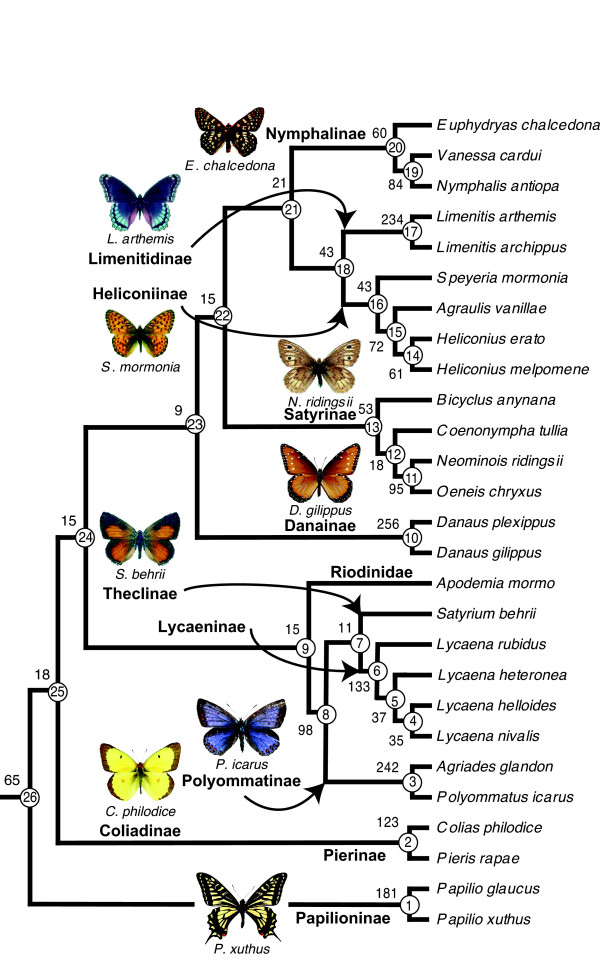Classification
Domain- Eukarya
Kingdom- Animalia
Phylum- Arthropoda
Class- Insecta
Order- Lepidoptera
Family- Papilionidae
Genus- Papilio
Species- Papilio xuthus
Domain
The Papilio xuthus is found in the domain Eukarya.
Organisms in this domain are categorized as organisms having
membrane bound organelles. Organisms in this domain also have
DNA in their nucleus. The Ailuropoda melanoleuca is an
example of an organism from this domain. To learn more about
it, click
here.
Kingdom
Organisms in the kingdom Animalia are
multicellular, heterotrophs, mobile, and lack cell walls. An
example of an organism from this kingdom is the Strix varia.
To read about more information on the organism, click
here.
Phylum
The phylum Arthropoda includes
organisms that have segmented bodies and appendages, jointed
legs, and an exoskeleton that is made out of chitin. Some
examples of organisms in this phylum are
Tabanus longiglossus,
Chauliodes pectinicornis, and
Panorpa sigmoides. Click on the names of the
organisms for more information about them.
 Class
Class
The P. xuthus is found in the class
Insecta. Organisms in this class are identified as having three
pairs of legs and a segmented body. The segmented body includes
a head with compound eyes and a pair of antennae, abdomen, and
thorax. Organisms in this group are also capable of flight and
either have one or two pairs of wings (Encyclopedia of Life 1878).
An example of an organism from this class which is related to
the Papilio xuthus is the Somatochlora hineana,
click
here for more inforamtion on this organism.
The phylogenetic tree (left, credit to Madelinn Tipler) of the
class Insecta, shows the butterflies, which include the P.
xuthus, in the order Lepidoptera. They are closly related
to the order Diptera, which includes the flies.
Order
The order Lepidoptera contains organisms that have two pairs of scaly wings. They also
undergo complete metamorphosis (Encyclopedia of Life 1878). The
Danaus plexippus is also found in this order. You
can click
here to read more about it. The phylogenetic tree (right)
shows some butterflies in the order Lepidoptera. This tree shows
that butterflies in the family Papilonidae, which include the
P. xuthus, are the first family of butterflies to branch off.
Family
Organisms in this family, Papilionidae, usually have
wings that are eloganted. Their eggs are globular, and the larvae have
structures called osmeteria (BugGuide 2003).
Genus
Members of the genus Papilio, meaning
butterfly, have extended
tails and use citrus as a host plant. There are more than 200
species in this genus (Miller and Miller 2004).
Species
The species Papilio xuthus
are cream, white, and yellow in color in both sexes. They also
have two postdiscal spots on the hindwing. Members of this species
are only able to mate with members of the same species (Miller
and Miller 2004).